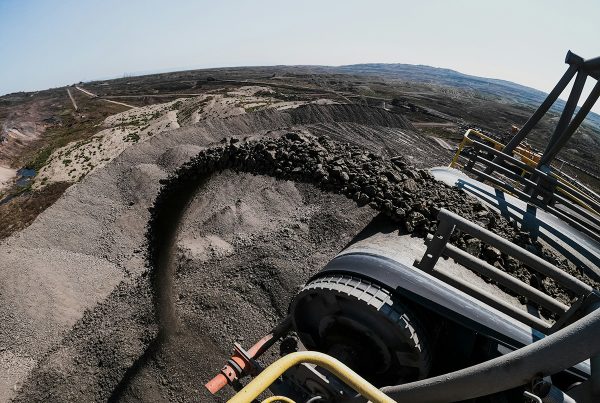Climate change is supported by the world’s constant drive for technological advancement and industrialization. Manufacturing’s negative impact has grown so dire that many companies are adopting sustainability measures to combat it. The motivation is how corporations are changing technology’s reputation into a solution instead of a contributor to the worsening environment. Are these platforms having the effect leaders hoped for?
The Current State of Sustainability in Manufacturing
Manufacturing accounted for 12% of greenhouse gas emissions in 2021, and 75% of this was making heat from burning fuel. Experts project there will be a 17% rise before 2050. The sector has strong ties with fossil fuels and waste generation, giving it many opportunities to streamline workflows and scale back on nonrenewable resources.
Scaling with sustainability requires several commitments. The first is environmental, social and governance goals. These frame all changes throughout the organization, serving as the foundation of the business’s values.
Then, digital transformation follows. Tech management platforms are one of the prime ways brands can track their emissions and have greater transparency because of data visibility. Nearly 70% of manufacturing stakeholders claim to be implementing sustainability strategies, primarily focusing on energy efficiency to achieve net-zero emissions. Those surveyed noted digital tools and employee training are necessary to meet targets.
Understanding Tech Management Platforms
Tech management platforms provide executives and technicians with process insights, especially when combined with integrations like sensor-based devices and artificial intelligence. The more compatible it is with these innovations, the more the software is scalable and valuable by supporting real-time decision-making and lean manufacturing.
There are multiple types of platforms manufacturers could invest in, including:
- Enterprise resource planning
- Supply chain oversight
- Building automation systems
- Industrial energy management
- Manufacturing execution systems
- Building information modeling
Many of these encourage automating tedious, time-consuming assignments to make workers more available for high-value tasks. Delegating responsibility in this way — such as regulating indoor temperatures and inspecting equipment — are only several examples of how 90% of a manufacturer’s carbon footprint could be gone by 2050 just by leveraging automation and software.
Benefits of Tech Management Platforms for Sustainability
A manufacturing software’s abilities may yield these environmental and practical advantages, depending on the use case. These examples inspire how to make everything from logistics to warehousing more eco-conscious.
However, installation demands overcoming several hurdles during the transition. Otherwise, executives may inhibit sustainability scaling efforts.
Resource Optimization and Energy Efficiency
Management platforms analyze the building’s resource consumption, including water and electricity. It can also tabulate how many materials go into product creation and how much waste the business generates. Further sustainability insights come from pairing this knowledge with advanced inventory management and demand forecasting to determine what customers actually want.
The programs visualize the data, making sustainable goal-setting straightforward. Decision-makers then see where the most prominent oversights occur, whether in heat or cardboard waste. The software is the guide for making high-impact goals the priority, with no room to second-guess what direction the enterprise should take.
Financial Stability
The up-front cost of tech platforms is high, but returns happen as soon as teams maximize their potential. For smaller brands, gradual implementation and middleware may be ideal to start scaling until transformation becomes more affordable.
These are areas of the business stakeholders may notice cost reductions in if using tech management platforms to their fullest potential:
- Lowering lead times
- Reduced inactivity and downtime
- Preventing human error and asset destruction
- Boosting safety
Inventory control is another major boon. Warehouse oversight platforms can track what is on shelves or about to be loaded into fleets. Staff have more control and agency over the products, noticing overstocks and preventing delays from insufficient stores. These culminate into better customer satisfaction and brand loyalty, which also helps the bottom line justify why sustainability investments are worth scaling.
Supply Chain Transparency
Sustainable scaling requires cutting tangible resource use and lowering greenhouse gases. It also includes honesty and adherence to environmental ethics. As tech management increases transparency, it also makes circular economic practices more possible. Manufacturers can see which suppliers are investing in recycling and renewable energy.
It is why many tech management solutions offer supply chain transparency to trace products and partner companies with similar values. People working within these collaborative digital spaces can more easily discover unsustainable processes and cut them from operations.
Communication Clarity
All workers can use these platforms to stay on the same page about the manufacturer’s environmental compliances and progress. There are countless opportunities for miscommunications, from the floor to the board rooms. Having a single location to communicate and see the same data is critical for keeping information consistent and with the same level of environmental awareness.
Culture Shifts
With the aging workforce and surplus of legacy technologies, the manufacturing sector’s digital literacy is inconsistent. This could make implementing sustainability practices alongside software complex.
Businesses must inspire teams to upskill by providing training. If executed properly, it will shift workplace culture to one that is data-driven and eco-aware. Greater interactivity with environmental concepts will make them more dedicated to achieving leaders’ goals. This could drive younger people to industrial workplaces, diversifying knowledge and skills in a multigenerational environment.
Software Is Strategy
Fewer corporate implementations provide as much potential for scaling sustainability efforts as tech management suites. They reveal improvement opportunities, remind employees to interact with eco-friendly practices and track the entity’s progress. Quality software can paint a future that motivates the workforce to stay dedicated to decarbonization.











